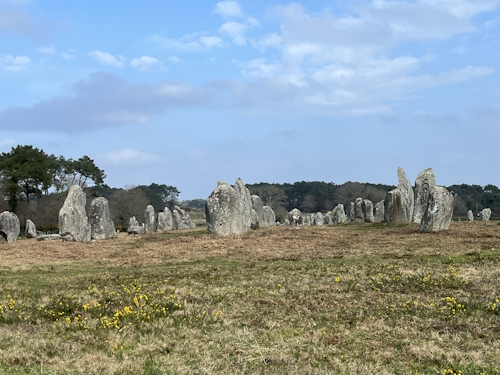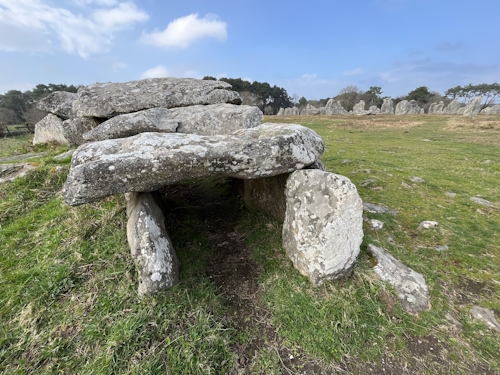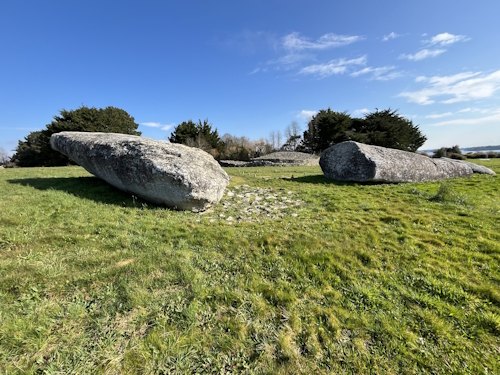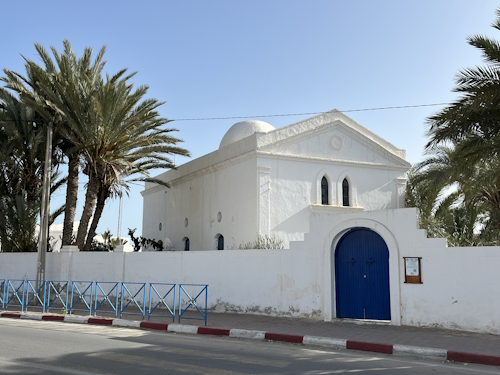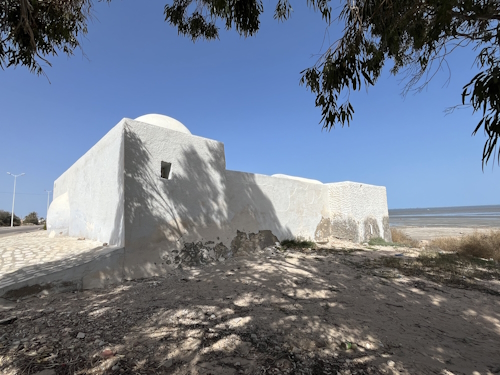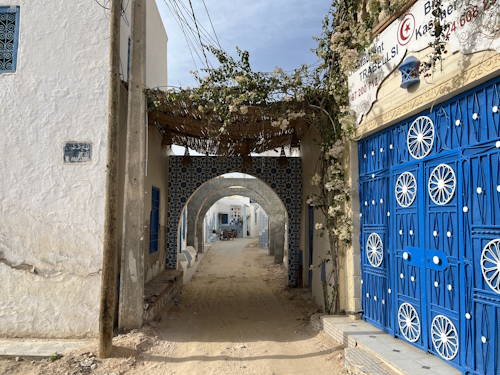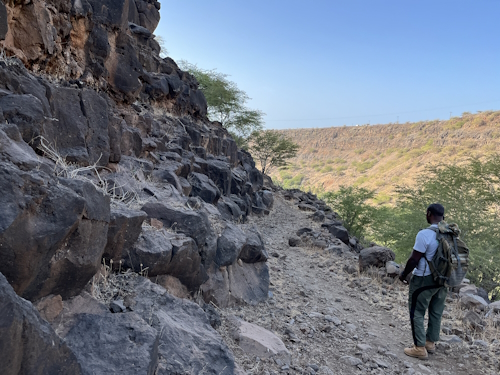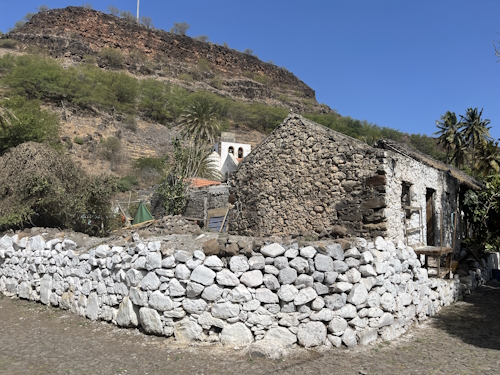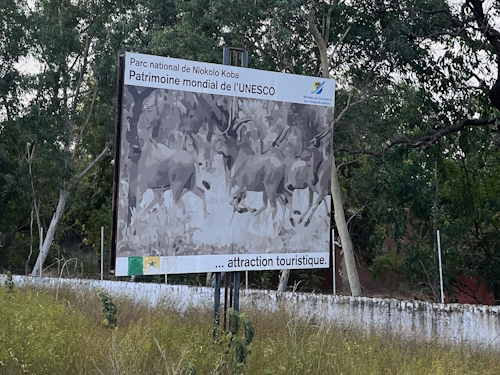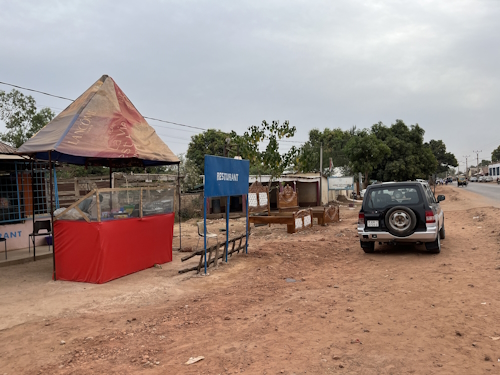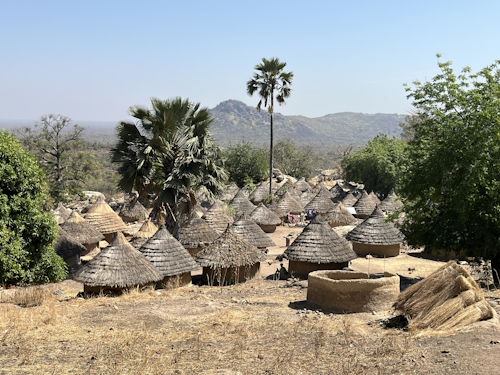Blog Travel in general
Travel Windows of Opportunity
I have been thinking lately about “Windows of Opportunity”, and whether they truly exist in a travel planning context. Windows of Opportunity are circumstances that suddenly present themselves and that may not happen again – so you need to react promptly to take advantage. This could be because an armed conflict ends or travel bans get lifted. For example: after the recent regime change in Syria, the Ancient Villages of Northern Syria have become accessible for the first time in about 14 years (trips to Serjella and Al-Bara are advertised). And a first international group visited North Korea in February 2025 after 5 years of Covid-closure.
I wonder however what these opportunities across a lifetime of WH Travel really mean. Should you go to Syria now in 2025 and put yourself on the waitlist for North Korea?
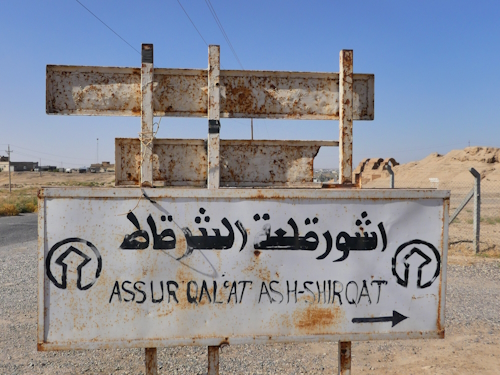
Windows of countries and sites
With the recent reopening of North Korea, every country is theoretically visitable again (though getting a tourist visa to Sudan or Niger may be tough). (Un)fortunately, as WH Travellers we need to get much deeper into a country than a border or a capital, so certainly not every WHS is visitable at the moment.
To gain an understanding of the impact of country and site "closures", let’s have a look at a few examples from the US naughty list:
- Iraq: Tourism to Iraq in general has almost always continued over the past difficult decades, but the numbers were mostly in Iraqi Kurdistan and at the Shia holy sites. Most WHS were off-limits during the US-led invasion of 2003 and its ISIS aftermath as they were right in the battle zones (it must be noted that 4 out of the 6 were only inscribed after 2003, so they wouldn’t have featured in WH travel plans anyway). Hatra and Ashur (Photo 1, credits to Clyde) took the longest to reopen; take a look again at how Thomas and Wojciech did it in 2021.
- Libya: The Libyan Civil War started in 2011, afterwards tourism hasn’t really returned although you can get in again since 2021, first on business visas and now on an erratic tourist visa process. All WHS are accessible, even the one in East Libya.
- North Korea: Group tours to its WHS were common until Covid hit (2020) and are expected to restart soon (though the border town that reopened in February 2025 unexpectedly closed again in March, according to Koryo Tours).
- Sudan: It has been on the US list since 2011, but its WHS have only been practically impossible to visit since the start of the Sudanese Civil War in 2023. It was a fairly mainstream destination before that (Photo 2 shows its excellent WHS of Meroë).
- Syria: The Civil War started in 2011; in 2015, “Iranian religious tourism was all that remained” (source). However, Damascus has always stayed open and in late 2016, many areas came back under central government control; 5 out of the 6 WHS have been visitable since, mostly on group tours, and, as mentioned above, in 2025, all can be done.
- Yemen: The WHS of Socotra and Shibam are accessible and have been so for years. Sanaa and other inland sites have been off-limits since the Houthi takeover in 2014.
And at some notorious single WHS:
- Afghanistan, notably the Minaret of Jam: located in a Taliban hotbed and probably unvisited by outsiders between 2001 and 2021.
- Democratic Republic of Congo, notably Virunga NP (Photo 3): The park is actually well-managed and has a good tourist infrastructure, but it lies in a highly flammable region with the presence of armed militia in and near the park, leading to frequent closures since its relaunch for tourism in 2014.
- Mali, Tomb of Askia: The area around Gao has had security issues since at least 2012 (it was even sketchy before), but Tripadvisor reviews show that people still trickled in until 2019.
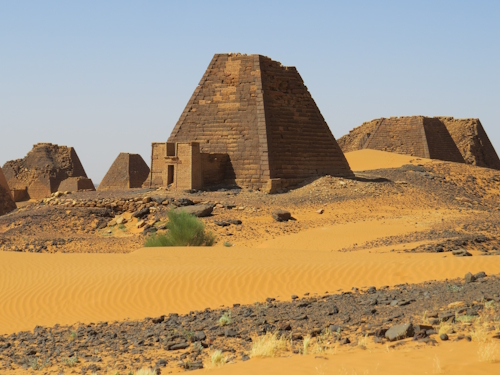
A need to act immediately or FOMO?
What we can learn from these examples is that inaccessibility caused by armed conflict and security issues generally doesn’t last for more than 5-10 years. Wars will eventually end, and tourist facilities are often quickly restored to their former glory, as everybody loves hard currency. Individual WHS, though, may stay out of reach for 10-20 years.
So I consider these not as true “Windows of Opportunity” as they do not generally open for a short period only. They are more like cyclic events with rather unpredictable timelines. You can be sure to get several of those opportunities during a travel life, even for countries with a problematic history. You can look at the Ancient Villages of Northern Syria from the perspective of “they have been inaccessible for 14 years”, but they have been open for 36 years as well during the past 50 years. 50 of our community members managed to visit during those earlier years.
Psychologically, the unpredictability of it all, the fear of “the window might close again on short notice”, pushes travellers into thinking these are once-in-a-lifetime opportunities. Hypes on social media strongly contribute to this FOMO.
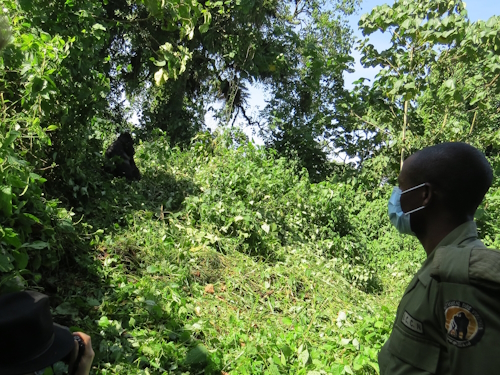
But keep in mind: When a country or region reopens after conflict, what will you encounter? Some people like to feel the optimism, witness history firsthand, or are lovers of Dark Tourism (seeing ruined cities, tanks left by the roadside, etc). But – especially keeping WHS in mind - how good will your visit be? The site may have been damaged during the war, may not have had its regular maintenance for years, site interpretation may have faded away, and the contents of the site museum are still packed away in boxes: it is probably not at its best.
My take on this is that I plan my trips in the order of the most appealing to me first. If a site I am especially attracted to has an “open window”, I will try to use it (as I did with Virunga). But I'd rather wait for Sanaa and a full Yemen trip being possible than rush to Shibam. There’s no harm in waiting a couple of years or even for the next cycle: the visitor experience may be much better.
Do you immediately act upon perceived Travel Windows of Opportunity?
Els - 30 March 2025
Blog TWHS Visits
2025 WHC: Carnac
The 2025 WHC will probably bring us the inscription of number 31 on our Missing List: Carnac. Two other 2025 nominations, Neuschwanstein Castle and the Minoan Palaces, are even higher on that list, so it might become a good year. Carnac is on the Tentative List as ‘Megalithic Sites of Carnac’, but the nomination has been renamed ‘Carnac and Shores of the Morbihan megaliths’. It has been put forward as a Cultural landscape and comprises four components with thousands of standing stones and tombs. The TWHS has a 100% recommendation after 24 votes from our community.
Carnac is a representative of the European megalithic tradition since the Neolithic, which also includes the Megalithic Temples of Malta and multiple sites in the UK and Ireland, such as Stonehenge and Brú na Bóinne. While at other subjects we’ve now ended up at very niche Tier 3 sites, Carnac undoubtedly is at Tier 1 among its peers. The nominated area covers 19,598 ha, about 4x as large as Stonehenge/Avebury and 6x the sites in Malta. Its oldest parts significantly predate Stonehenge and overlap with the earliest timelines of Newgrange and Ħaġar Qim.
What took France so long to put this forward? Breton nationalists may claim it was subordination by “Paris”, but it just has been a long and careful process which has been described on the official nomination website. The story already starts in 1980, when Carnac was part of France’s first Tentative List (we had overlooked that; I’ve now updated the Site History accordingly). It stayed there until a revised list was submitted in 1984. It reappeared in 1996.
Along the way, things evolved:
- Although the sites have been popular tourist and scientific destinations since the 19th century, it took until the 1990s for them to be properly managed and protected. The Table des Marchands (a major dolmen at Locmariaquer) was only excavated and restored in the early 1990s for example.
- The scope changed from Carnac Alignments only in 1980 to multiple megalithic locations in the Morbihan area in the current proposal.
- In 2005, major excavations brought to light connections between the elements.
- In 2011, an Association was created to streamline the nomination process.
- Thanks to its size, many actors are involved so it is a slow process to keep them all on board. Some opposition from landowners has been reported in the past.
I started my visit at the Carnac Alignments component. Winter is a good time to visit as you’re allowed on the trail amidst the stones by yourself and there will be much less visitors overall. Entrance to the Alignments is also free from October-March. I was lucky with the weather in early March: sunny, blue skies. I parked at the Ménec alignments and then continued on foot. Nothing can prepare you for the first sight of the endless rows of neatly arranged standing stones. I walked most of the ‘Alignments trail’ that connects Ménec with the other Alignments. You can also go by car as all have (smallish) car parks.
The best part I found at the start of Kermario Alignment: it’s here that the standing stones get taller, a complete dolmen can be found (Photo 2) and you get the iconic views of the rolling hills covered with rows of stones. Unfortunately, late afternoon isn’t the best time of day for pictures from the viewing tower at the opposite end as it faces the sun. I also think that on-site interpretation could be more informative, although I understand that not much is known about the idea behind the Alignments. Here and there you still see markers left by people who oppose the fencing of the whole area.
Two days later, I went to the Locmariaquer component. As the crow flies, it lies only 8 km from the Alignments, though it is a bit further by road. The main part here is a cluster of three major monuments. A 7 EUR fee has to be paid to enter, but they let you watch a good video that provides a bit more context. The individual monuments (a 140m long tumulus, a dolmen and the grand fallen menhir) have information panels as well. The ruins of the Grand Menhir (Photo 3) – fallen and broken, possibly due to an earthquake - are the most impressive. Parts have been reused as spolia in the dolmen at the site, they have some simple carvings as well (plus a bit of historical graffiti, I think I read "Gazelle"?).
Els - 23 March 2025
Comments
Els Slots 23 March 2025
No, nothing official. Just how I perceive for example Koh Ker - a Tier 3 Khmer site (I wrote in my review: "But we are getting to the Tier 3 sites now I think, with Angkor solely occupying Tier 1 of the Khmer sites and the current WHS Sambor Prei Kuk and Preah Vihear holding Tier 2.").
It has more to do with "importance" than our rating system which is a bit of a mix of quality of the visit and intrinsic quality of the site.
Astraftis 23 March 2025
Are the tiers an official classification? 😬 Or maybe something we can determine from the site's statistics!
Blog WHS Visits
WHS #957: Djerba
This is the first review of a visit to the Djerba WHS after its inscription. The site has received horrible reviews and an exceptionally low rating from our community, but I thought maybe it would all make more sense with the help of an OUV-frame. It’s about a dispersed but homogenous settlement and land-use pattern, characterized for example (but not limited to) self-sufficient rural communities with their own water supply, palm groves and tiny mosques. That’s why it includes 22 rather featureless and abandoned neighbourhood mosques.
For my visit, I tried to make a representative pick from the locations without having to rent a car. In the morning, I visited 4 components in and north of the capital city Houmt Souk. The medina of Houmt Souk is not a rural settlement, of course, but the trade town where everything ended up. Included is just a small zone (the old funduqs, the covered market, the Mosque of the Turks and St. Joseph Church; but not Borj El Ghazi Mustapha). It feels like a smaller version of the Medina of Tunis, and even in the early morning, it is all geared up to receive the French and German beach tourists. I then walked on to another component, the Church of St. Nicholas. A sign on the door says that it only opens on Thursdays from 10-13. The sizeable church (photo 1) can only be seen from the sidewalk across the street.
My next goal was the Mosque of Sidi Smain (photo 2), located along the Houmt Souk Corniche. This is one of the fortified mosques that formed a defense system along the coast. It lies across the street from a much prettier newer mosque with the same name, but it's only this old one that is inscribed. The last one on my morning visit was the Mosque of Sidi Zekri. This is situated in what is locally known as the ‘Tourist Zone’, although it’s more surrounded by wasteland and half-finished apartment buildings. It’s an underground mosque of an interesting design, but you cannot enter.
In the afternoon, I went southward, first by taxi to Erriadh. Formerly known as Hara Seghira, this was a major Jewish neighbourhood. It’s now a small town that tempts to attract the selfie crowd by creating “Djerbahood”, streets full of murals (photo 3). I had no idea where to find former Jewish landmarks such as the yeshiva described in the nomination file.
I then walked on for 10 minutes to reach the El Gribah synagogue. I had read online that there’s an entrance fee and that you have to show your passport, but nothing was asked for. Your bag has to go through a security scanner, but that’s all. Tunisian military personnel guard the entrance road since the site has suffered from several terrorist attacks over the past decades. You can visit the synagogue interior freely (it’s open daily, except Saturday, in the morning and late afternoon) and take pictures. Next to it lies a courtyard with rooms for Jewish pilgrims.
The Verdict
I tried hard to understand and like it more than the previous visitors did, but despite my research and having all documentation available, I came back even more confused. There may be a hint of OUV here or there (the sheer survival of the El Ghriba synagogue, the distinctive defensive lines formed by its coastal mosques), but what really put me off was the lack of interpretation on site. It also fails on almost all of the WHS Commandments. Djerba feels like a kid that has received yet another present (World Heritage status that was apparently so urgent it required an AB overrule) and never even unpacked it 2 years later.
The official number of locations is also confusing: I think we have another (the 23rd!) example of “Incorrect UNESCO 'Number of locations'” here. The site was nominated as a serial site of 31 components: the nomination dossier, the maps, and the ICOMOS evaluation all have 31. However, the UNESCO website currently shows 30 components, and the 2024 SOC report by Tunisia had 32. A “Zone Côtière inhabitée” was added in the northwest, while Khazroun / Sedghiene / Guecheine are seen as one by UNESCO where they are separate elsewhere. I don’t see a decision about a boundary modification, so my best guess is that the original 31 locations are still valid.
Practicalities
- If you want to see a fair number of the 30+ components, you’d need to rent a car or charter a driver for half a day as the sites are so scattered around the island and some are really remote. I did my 6 components on foot and by taxi. There are local buses as well, but they don’t run often. Taxis on Djerba are a good bet since they are plentiful, routinely use the meter and are cheap (about 3 EUR for a 15-minute ride). Bikes can be rented as well (and even quads!), but as with hiking, the sun is fierce and the distances are just a bit too long.
- I stayed overnight in the old center of Houmt Souk, in a nicely renovated townhouse (Dar Lola) in the core zone. Houmt Souk is mostly alive during the day when the day-trippers from the beach resorts come and visit. In the evenings, many restaurants were closed. Maybe this was also caused by it being Ramadan: so they did not bother to open at all if they couldn’t serve lunch. Shops and supermarkets remained open during the day.
Els - 16 March 2025
Blog WHS website
The First List
While adding the plaque photos, I came across this pretty marker sent to me by Sebasfhb and found at the Wieliczka Salt Mine. It shows the first 12 sites inscribed on the World Heritage List, so it is essentially a plaque for all WHS of 1978. It prompted me to look closely at how these 12 came to be the first.
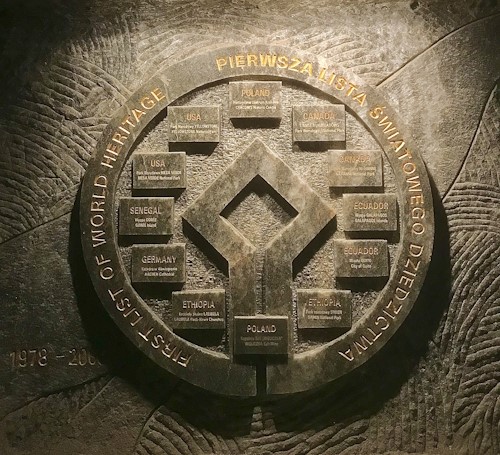
The nomination process in 1978
The World Heritage Committee (WHC) responsible for confirming the first list gathered in Washington DC, from 5-8 September 1978. The text of the World Heritage Convention itself was drafted in 1972. In 1977 there had already been a first WHC meeting, where they decided on subjects like amendments to the draft text of the WH convention and a printed form to be filled in for a nomination, and where the wish was expressed that “the World Heritage List should be exclusive and ..drawn up with extreme care”.
As was common in the first years, a Bureau Meeting preceded the WHC in June 1978. Here, a select group of 6 Members (Chair, Rapporteur, Vice-Chairs - together known as the "Bureau") reviewed the nominations received and the evaluations IUCN, ICCROM and ICOMOS presented. Their job was mainly to filter the nominations and to decide which ones would be brought to the table at the WHC in September. There was to be no substantive discussion on the individual sites during the WHC. The Bureau Members had little preparation as well: "some members of the Bureau had only received copies of the nominations that morning".
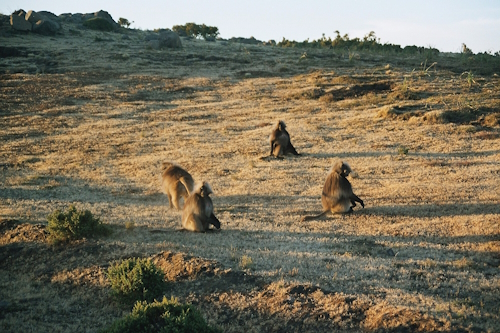
Sites that missed out
12 sites eventually got inscribed, but many more were proposed. Most were formally Re- or Deferred at the Bureau session for various reasons:
Auschwitz (Poland) fell victim to a hastily introduced new rule at the Bureau Meeting to only allow 2 nominations per year by a country. ICOMOS(!) chose the Wieliczka Salt Mine (the “most important”) and Krakow over Auschwitz. The latter got a Referral with a positive recommendation for 1979, when it indeed was inscribed. There was no word on the potential controversial status of this early “site of memory”.
Poland also “lost” Warsaw (needed further expert study to see if it met the criterion of authenticity) and Bialowieza (to await expert evaluation by the IUCN European Bison Committee) at that stage.
Regarding Djoudj (Senegal), additional information was requested about the possible dam construction “which would jeopardize site’s integrity”.
Lake Ichkeul (Tunisia) had a positive recommendation from the Bureau but was deferred eventually at the WHC, because requested additional information on water quality and assurances of continued supply had not come through. Also, for Zembra and Zembretta Islands National Park, there wasn't enough documentation for IUCN to perform a full evaluation. Two other nominations, Djebel Bou Hedma National Park and Djebel Chambi National Park, were withdrawn by Tunisia. The first one still lingers on its T List.
For Fasil Ghebbi, Gondar (Ethiopia), more information was needed. Eight other Ethiopian sites were deferred as well due to “inadequate documentation”. These were: Lower Valley of the Awash, Adulis, Tiya, Melka-Kontoure, Matara, Aksum, Yeha, Lower Valley of the Omo. It is remarkable to see that 75% of Ethiopia’s current WH List of 12 was already proposed so early. From the ones not inscribed later on, Adulis and Matara are now part of the country of Eritrea (and not on its T List), and Yeha has reappeared on Ethiopia’s T List in 2020.
Syria put in a request for funding for the sites of Damascus, Aleppo, Bosra and Palmyra, but did not submit nomination files. The 4 sites did get official IDs, though: 20, 21, 22 and 23, respectively. They kept those til the inscription years later (Aleppo only in 1986).
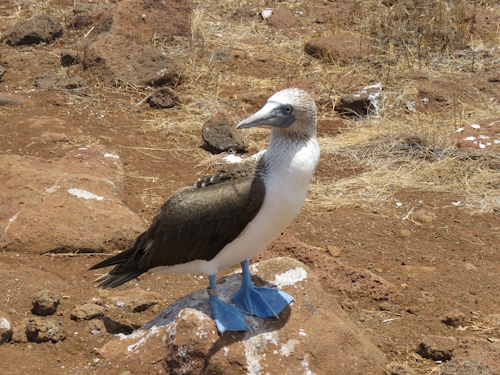
A closer look at the 12 that got inscribed
Ordered by official ID, which seems to have been handed out at the acceptance of the nomination dossier, the following sites were inscribed:
1 - Galapagos Islands (photo 3)
2 - Quito
3 - Aachen Cathedral
4 - L'Anse aux Meadows
9 - Simien National Park (photo 2)
18 - Lalibela
24 - Nahanni National Park
26 - Island of Gorée
27 - Mesa Verde
28 - Yellowstone
29 - Kraków
32 - Wieliczka Salt Mine
Some trivia:
- With an average rating of 4.08, according to our community, 1978 still represents the best year in WH history.
- Iain Jackson was and still is the only member to have visited all 12 WHS of 1978. At 11, Gary Arndt, Roger Ourset (both missing Simien NP), Michael Novins, Atila Ege, and Roman Bruehwiler (all missing Nahanni) came close. 10 more lack visits to 2 WHS.
- Only 7 different countries had sites inscribed; 5 of them had two sites. 36 countries had ratified the WH Convention at the time.
- No site in Asia was recognized. Also, Iran was the only WHC member representing that continent at the meeting.
Els - 9 March 2025
Comments
Els Slots 11 March 2025
Good point, Astraftis, regarding "Probably there was the tendency to favour "special" places beyond the most known ones, which was taken as granted and maybe not considered in need of immediate protection." - from what I read about 1978, there also was the appeal of getting a budget allocated (it may explain the actions of Ethiopia). Maybe I will do a follow-up post about the first 5-10 years, zooming in on that aspect.
Astraftis 10 March 2025
Very interesting! I love this history of WHS.
With regard to Clyde's question, beyond the bureaucratic reasons explained by Solivagant, I have the impression that at the time there seemed to be a slightly different idea about what needed to be nominated. Probably there was the tendency to favour "special" places beyond the most known ones, which was taken as granted and maybe not considered in need of immediate protection.
Val Camonica was enjoying some popularity in those years. Some years before, in 1975, the coat of arms (later also flag) of Lombardy was inspired by its rock art. This was probably due to the surge in their studies in the '60s. And so they landed on Italy's list as #1. Roman ruins and historical city centers are perhaps too obvious.
On the more futile side of things, I was thinking that we could assign ourselves some kind of number based on the codes of the first non-visited sites on the list... well, since I have never been to Americas, it is an easy 1-2-4, not really exciting.
Els Slots 10 March 2025
You're right about the numbers, Ian. They can be found here: https://whc.unesco.org/document/341
Ian Cade 10 March 2025
Thanks very much for this Els, a nice little deep dive.
It also helps explain something that has niggled me for ages, why are there no site numbers 5,6,7 (they must be the 3 Tunisian unsuccessful nominations) or 11 & 14 (which must be the 2 unsuccessful Ethiopian/ Eritrean nominations)
I'm sure the answer to that already existed somewhere on this site, but it eluded me until today.
Solivagant 9 March 2025
@Clyde "Any idea how come Italy and China had no site at the time?"
The World was very different 47 years ago at the time of the 1978 WHC
a. Italy didn't ratify the WH Convention until 23 Sept 1978 - after the Bureau meeting of that year. It did well to get Valcamonica nominated and inscribed the next year (1979) as its first WHS... an interesting choice, perhaps reflecting that it wanted something reasonably "simple" to start with? Rome waited until 1980.
b. China didn't ratify unti 12 Dec 1985!! I made my first visit to China in Jun 1978..... The Gang of Four had only been toppled in Oct 1976.... and the country was in a period of interregnum with Deng Xiaoping just reasserting himself under Huaguofeng ...but not yet in control.....and the rest is History!
clyde 9 March 2025
Interesting! Any idea how come Italy and China had no site at the time? 2 each were probably not enough...
Sebasfhb 9 March 2025
Great history! Nice to see my photograph still was of some use
Jay T 9 March 2025
Thanks for the deep dive on the first class of World Heritage Sites. They remain a goal of mine, and I'm hoping for some progress on more of them this year. I'm fascinated to see what was proposed so early on; I'd never looked up that history.
Blog WHS website
Plaque Project Update
Last October, we started the inventory of WHS Plaques, with many community members posting their info at the dedicated forum topic since. I'd like to give a big thanks to all who have contributed. Especially to Clyde, who is the go-to guy to answer the question “Where’s the plaque?” since he has been fascinated with them for a long time. About 70% of the WHS now have at least one plaque registered.
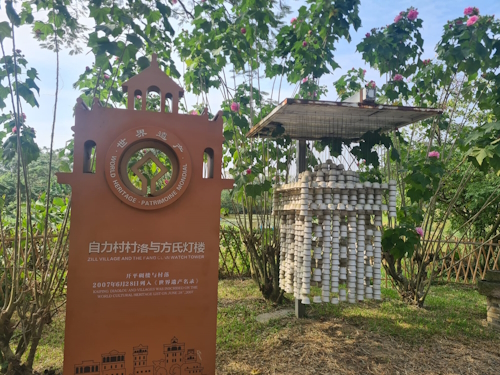
Findings from the first stage
A total of 1179 plaque locations have been put forward, spanning 851 sites. Over 1100 pictures of plaques were shared.
- We found out that some plaques that had been photographed previously are no longer present on site. So there is a Plaque History as well. I’ve added those older ones to the repository as well (with a remark) since they may have had interesting designs.
- When No Plaque has been found on a site, this is also logged.
- Some sites have dozens of small plaques, one for each monument. Here, I tried to follow the logic of making separate entries only when they are at official separate components.
- As always, when you’re taking on big projects, there’s a bycatch as well: this was really the first time that I used the location names in overview lists. Some were outdated or unnecessarily long, like “Canterbury Cathedral Canterbury, Kent”. In those cases, I updated the location names as well.
Incorporating them into the website
The full plaque overview can be found on this revised page: WHS Plaque Collection. When you click on a thumbnail picture in the list, you’ll get a larger version to view the plaque in more detail. I think it is great to browse through them and:
- find the pretty ones (the Val di Noto series, the Kaiping Diaolou (photo 1 above) and Pitons of Réunion (photo 3 below));
- or the ones with errors or misspellings (look at Mazagan, the Mausoleum of Khoja Ahmed Yasawi and Persepolis);
- or the ones in bad shape (such as the broken one at Awash) or still a work in progress (Gedeo, see photo 2);
- or the ones with interesting languages (the Tower of Hercules is in Latin, the Hoysala temple has writing in Kannada), or calendars (Koguryu Tombs displays the year of inscription in the Juche calendar).
The page lists all plaques suggested so far, but adding all available photos is still a work in progress. Both Solivagant and Clyde gave me access to hundreds from their private collections.
Also, there’s a block on each site page that displays the applicable plaque(s). This is a temporary solution – maybe they would be better stored in an album, but we don’t have the functionality for that at the moment.
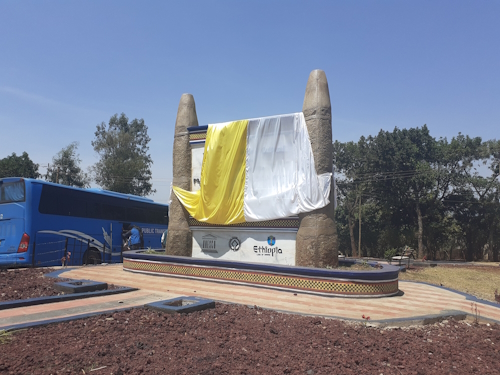
Photo policy
For the plaque photos the same photo policy is applicable as elsewhere on this website:
- The copyright of the photos stays with the original owner. The photo credit is shown.
- Photos taken by community members are preferred over those from the public domain.
Also, I have
- Chosen the clearest picture if we have more than one, preferably with the plaque being the center, with a little bit of the setting (on a wall, a stone, etc) showing. No people present.
- Stored the photos in a reusable way (standard naming and in 3 sizes).
- Watermarked the large pictures to discourage theft of this unique collection.
- Not used external sources such as Shutterstock and Alamy (as the unpaid versions are covered in watermarks) and sources that don't allow deeplinks.
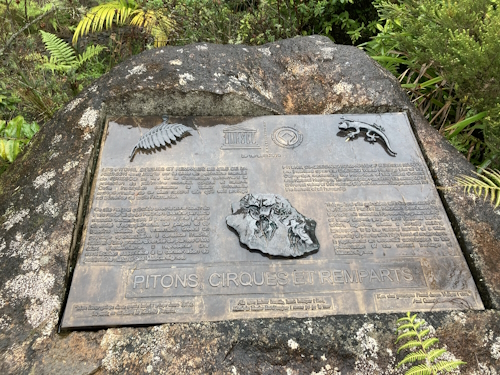
Things to do and how you can help
We’re not done yet! I will be adding the remaining photos that have already been delivered or suggested. There are still hundreds to go, so that will take me several weeks.
Where you can help is that we need plaque locations (and plaque photos) for the 372 missing WHS. I’ve put a list, ordered by country, of the missing ones on the Plaque Topic on the Forum. You can add the specifics there and/or send them by e-mail to els@worldheritagesite.org. Brazil, China, Germany, Indonesia, Iran, Kenya, Peru, Russia, South Africa, and Vietnam are countries that are especially underrepresented at the moment.
And if you have any photos of your own that could replace those now marked as coming from an “external source”, I’d also be grateful.
Els - 2 March 2025
Blog Countries
Most Difficult Countries to visit a WHS in
When I wrote about the TWHS Masters three weeks ago, I was surprised to find that people who visited all or almost all countries were missing out on also having visited (T)WHS in those countries. A drop of 30-40 is not uncommon. I decided to have a closer look at which countries are the hardest to visit a WHS in, and why the WHS in those countries may have stayed unvisited.
None of the WHS visited
At the moment, 168 states have at least one WHS. The best scorer (Shihe Huang) among the community members has visited WHS in 154 countries. So he misses 14, and the others at the top of the rankings even lack up to 35 countries.
So which countries do they miss? Looking at the Top 16 members displayed in the rankings, together they have 94 different countries where they are missing a visit. The 10 Most Difficult are:
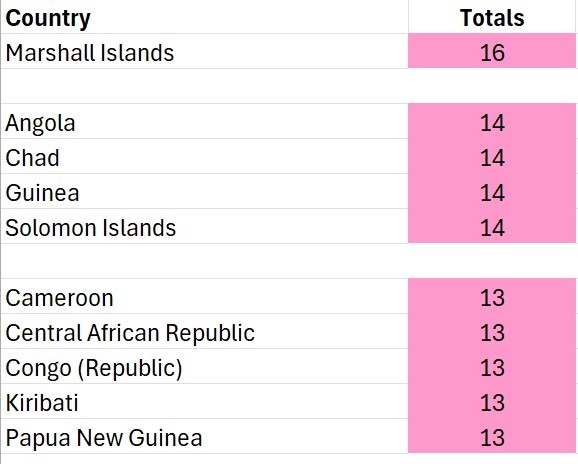
A few other countries just outside the Top 10 are notable as well, as they have more than 3 WHS to choose from but are rarely covered: Burkina Faso (4), Cote d’Ivoire (5), DRC (5), and Tajikistan (4). You can find the full list here.
General factors that come into play
Not visited the country at all
Obviously, if you haven’t visited a country, you won’t have visited any WHS in it either. This isn’t a big factor among this group of well-travelled members though: 6 of the 16 have visited all 193 countries and 7 others have 138+ (mostly in the 150s). For the remaining 3 I couldn’t find any public sources for their UN count.
Open or closed to tourists, dangerous or not, difficult and expensive visas: the people at the top of these rankings have travelled for so many years that such complicating factors have little impact. Only 4 miss out on Yemen for example.
Only WHS in their country
30 countries have only one WHS, and all of them (except for the city-state WHS Luxembourg and San Marino) figure on the ‘Most Difficult’ longlist of 94. Some people are even stumbling on the Singapore Botanic Gardens, Santo Domingo or Bridgetown. Six of the ten most difficult countries have only one WHS. So 'having only one WHS' seems to be a major defining factor.
The Inheritance Effect
There’s an administrative factor as well: if you have ticked one component of a serial transnational or transboundary site, you will “automatically” get a tick for the other countries involved, even when you may have never set foot there. So if you have visited Sangha in C.A.R., you will also get Cameroon and the Republic of Congo! Moldova is also a notorious example, as a visit to any Struve site will give you a Moldova tick as well. Unfortunately, due to the way we register visits on this website, I cannot differentiate between them.
But I don’t think this is a major factor: most transnational and transboundary sites are located in countries that are well-covered anyway (Europe, North America). Only Qhapaq Nan will get you a big bonus (6 countries), and if you have made it in time to the W-Arly-Pendjari Complex it will give you 3 fairly difficult countries in return (Niger, Benin, Burkina Faso).
Country specific factors
When we zoom in on the individual countries, the following observations can be made:
Single and remote, costly, specialist WHS
Remote island WHS are always hard, as they are costly and also require a specific interest in marine activities.
- Marshall Islands: people often 'tick' the country via the Island Hopper Flights that will land you on Majuro Atoll. But its only WHS is Bikini Atoll, 3 days further away by a chartered ship. Only 2 people from the whole community claim to have visited it.
- Kiribati has a similar pattern: its Phoenix Islands require a private or chartered vessel. 3 people within the whole community have visited; all are part of the Top 16.
- And Solomon Islands to a lesser extent as well: its main airport at Honiara is better connected to the outside world, but East Rennell requires an onward domestic flight that goes twice a week and then "a car ride more expensive than the flight". 3 members have visited, 2 of them are within the Top 16 of this survey.
Odd, single WHS
Although a country’s first WHS often is its major tourist site or a place in or near the capital, a few countries have made odd choices:
- The low ranking of Angola I think is due to three factors: it was a hard country to visit because of visas etc for a long time, its only WHS Mbanza Kongo is quite out of the way, ánd Mbanza Kongo is a relatively recently added WHS so it usually takes a while for visitors to catch up.
- There are several valid reasons to visit Papua New Guinea, but Kuk? It lies close to Mt. Hagen though, so it is accessible, but most people wouldn’t bother as it seems so unappealing.
- Guinea has only one WHS, Mount Nimba, far from the capital and without a tourist infrastructure. It even is a transboundary WHS, shared with Cote d’Ivoire, but few people will have visited that side either.
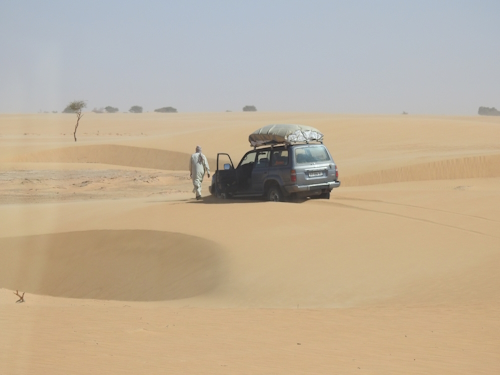
Not wanting to pay up for Central Africa
The following Central African countries all have more than one WHS, but still are in the top 10 least visited countries. You can’t get away with covering capital cities only here.
- Chad: two good WHS, but they take time, money and stamina to reach. Maybe the heat, the wild camping and the need for an agency also deters people.
- Cameroon: easy country but its two WHS both require (expensive) specialist agencies to get into and are not so popular that sharing is an option.
- Central African Republic: realistically only one of its two WHS is reachable, but again: time, money and stamina are needed.
- Republic of Congo: both its fine WHS are accessible on specialist tours.
My conclusion is that the main factors why some countries aren't covered well are: (a) having only 1 WHS, plus (b) the cost versus perceived benefits of reaching that WHS if it lies out of the way. People who don't like marine sites aren't going to pay for a 10k+ EUR chartered voyage to a remote island, and neither do people who dislike the desert go all the way in Chad.
Els - 23 February 2025
Comments
Philipp Peterer 25 February 2025
25 days of holiday of course :)
Philipp Peterer 25 February 2025
Here's my "hobby traveler" take on this. It simply makes no sense to visit any of these sites at this stage of my life. I have 25 holidays per year and can't even dedicate all of them to WHS travel due to family obligations. Thus, whenever I plan a trip I try to go for clusters and the least amount of travel time per WHS. If I stay healthy, I can cover the ones that need a multi day boat ride later.
Luboang 23 February 2025
Interesting topic! High cost vs. lack of interest in particular types of WHS vs. safety concerns vs. too much time and effort investment required is a good mixture which doesnt allow me to bother thinking of/ or even dream of for that matter of visiting good number of WHS.
Conclusion: base yourself in Europe.
Blog WHS Visits
WHS #956: Cidade Velha
Cidade Velha is an easy, short excursion from Santiago’s (and Cabo Verde’s) capital Praia. A bay, a few cobbled streets, remains of Portuguese fortifications and churches – you know what it looks like even before you have seen it. I tried a different approach for my visit and went for a guided hike through the Ribeira Grande Valley. This way I also ticked one of the other activity boxes I had for Cabo Verde: “Do a hike in the countryside” (as the archipelago is known as a hiker's paradise).
When you look at the official map of Cidade Velha WHS, you’ll notice that not only the seaside town is included but also a much larger area inland. The boundaries of the core zone follow the canyon that was carved out by the river Ribeira Grande. This area is linked to a specific part of the site’s OUV: the “acclimatisation and dissemination of numerous plant species between the temperate and tropical zones”. The Portuguese colonists experimented with various crops here in the 16th and 17th centuries, starting unsuccessfully with cereals but later finding out that plants from Africa’s mainland (coconut) and Latin America (maize) did well.
We started our hike in the village of Calabaceira. From there, a marked trail leads down into the valley. The guided hike is labelled as “an easy and accessible path for every hiker” by the tour company, but the volcanic soil is rocky all the time and especially going down you have to stay concentrated so as not to slip.
Already at the start, we saw a troop of Green monkeys (mammal migrants from West Africa); the guide said that they always run away to a higher spot on the cliffs when they see humans on the path – and that is what they did when we passed as well. The views here at the beginning of the trail are stunning as you look into the evergreen valley with a great variation of trees. This is in stark contrast to the rest of the island, which is pretty barren in the dry months of winter. There’s a natural spring here that provides water all year for irrigation.
Halfway down the ridge, we came across the first farms. Nowadays most farmers live in Praia and only come during the season to work the land (and return home in the evening). There’s a good variation in crops: two kinds of bananas, mangoes, papaya, tamarind, figs, and berries. The most popular plant however seems to be sugarcane, as it forms the main ingredient of the highly alcoholic drink grogue.
In the valley, we followed the dry river bed (flat, but still a lot of stones!). Here we stopped at a single huge baobab, said to be over 400 years old. Cabo Verde’s baobabs are linked to the visit of Charles Darwin to the island in 1873: his first real “taste” of tropical vegetation, and the longevity of baobabs got him thinking about the age of the earth. The specimen he saw apparently is no longer there, but this one must have been mature at the time and quite a sight as well. Like Darwin, we also saw several Grey-headed kingfishers – it’s funny to encounter a species of this globally common bird family not near water, but behaving the same as always: sit still on a branch and wait until an insect crawls by.
After 4km of walking, which took us 2 hours, we arrived on the outskirts of the town of Cidade Velha. We found a simple distillery squeezing the juice out of the sugarcane to prepare it for being turned into grogue. Sugarcane stalks also comprise the traditional material for the roofs of houses, as can be seen in the old street Rua da Banana.
Els - 16 February 2025
Blog WH Travellers
Tours to WHS
My recent trip to all 10 WHS of Mauritania, Senegal and Gambia was a mix of 3 styles: a Group Tour for Mauritania, independent travel in North Senegal and a Private Tour for Gambia and East Senegal. I do not regret these choices. The downsides of organized travel were mitigated by not having to endure them for a long time. Let’s look at what Tours to WHS can bring you.
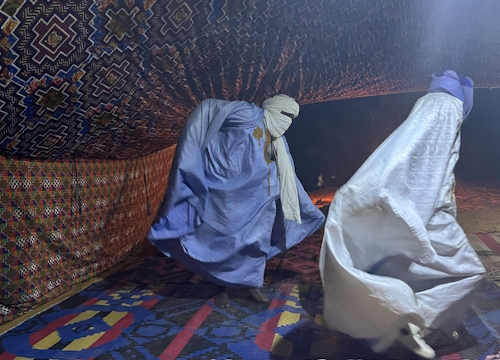
Pros and cons of tours
1. Convenience versus lack of first-hand experience
Although I always first try to cover places individually, sometimes the infrastructure just isn’t there (or very complicated/expensive) to do it on your own. Desert trips like Mauritania and Chad require 4WD driving skills and travelling in a convoy. Manu NP requires a boat and camping in the jungle. Without a tour, you would not even get there.
The downside is that when I don’t organize it all myself, I feel less prepared and the memories don’t stay with me as long.
2. Local perspective versus cost of adding a guide
A good guide can be your key to unlocking the country, adding local perspective without the guide having to be a scholar on the Almohad Caliphate or Saloum Delta ecology.
But it is always a gamble whether they deliver on this. A minimum tour leader standard (good English, decent communication and organization skills – qualities you will only start to appreciate when they are absent) is usually aimed for, but most cannot go beyond that level. This is especially true in countries with few tourists, the only kind of countries you take a tour for anyway. Photo 1 shows our Mauritanian guide dancing - an activity both we and he could have done without.
Often you are better off hiring a driver with good language skills.
3. Seeing all points of interest versus missing the point
Tours often are all-day affairs, to keep you busy for 12 hours or so. They follow a set itinerary and often use minor, ‘filler’ attractions in the area to offer their guests a varied menu as they cater to an audience of different interests.
When I travel individually, I make the WHS the center of the day. I spend there as much time as needed. Often I don’t go anywhere else on that day. But I’ve been on tours where I have sat all day waiting for a WHS visit to happen after a kitschy modern palace, a village visit and a belated lunch, reaching the WHS just in time before sunset (I am describing my Moenjodaro visit, during the Pakistan-tour-from-hell).
So go for a private tour if you can afford it – this way you can make sure, both beforehand and on the day itself, that your interests are prioritized.
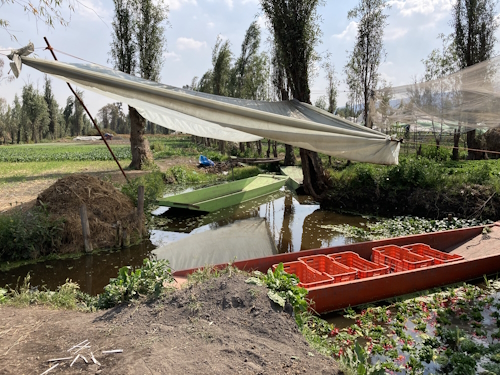
Best guided site tours
A special kind of tour is the ‘guided site visit’: sometimes obligatory (you have to join a group to shuffle with 30 others through a palace), but at other times a more in-depth visit of multiple hours up til a day with a knowledgeable guide in a private or small group setting.
If I can find a good one of the latter, I am always prepared to pay for a tour to enhance my WH site visit. I scanned my reviews of visits to WHS for the ones I remember most fondly, and these came out best:
- Xochimilco (private tour): a very relaxed day tour centered around the produce of the floating gardens (photo above), an essential part of the Mexico City WHS. We visited farmers, ate with them, looked at their produce in the field and at the market. A peek into a lifestyle I could never have organized myself.
- Lake Baikal (private tour): a full day in Baikalsky Nature Reserve, taking in the views, hiking through a Siberian pine forest and observing the ringing of birds (not an activity I would have chosen myself considering my slight ornithophobia, but it was enlightening).
- Matobo Hills (small group tour): seeing varied aspects of this hard-to-grasp site, including a wild chase of a baby rhino with the unforgettable Andy.
- Both Brazilian Atlantic Forest sites, South East and Discovery Coast (private tour): exploring them in the company of passionate Brazilian guides (the best company overall you can have; the photo below was taken in Guarau) who were well-educated ecologists.
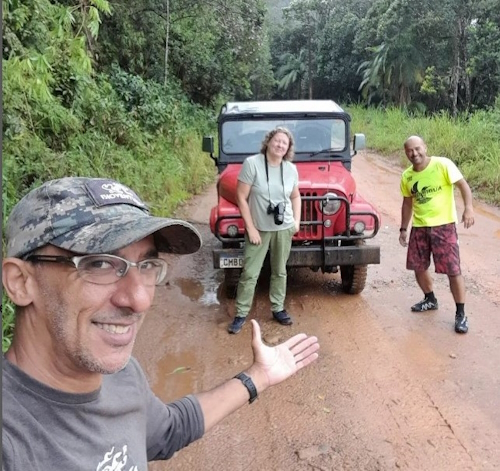
Other good bets are sites where there isn’t much to see above ground such as Fort Ancient (Hopewell), where I got a deep dive into the subject on a tour conducted by the Site Manager talking about the complex history of this specific site, or Vredefort Dome.
Do you have any memorable guided day tours to (T)WHS that improved the experience?
Els - 9 February 2025
Comments
Elena Y 9 February 2025
I've never done a full tour, but I think the "Wawel: The Most Precious" guided tour in Wawel Castle was my key to enjoying the site. They have a very odd ticketing system where you can either choose single areas of the castle to go to or spend a premium for an all-access pass. The Most Precious tour was a nice in-between and though it's a highlights thing (still two-and-a-half hours!), I felt pretty satisfied that I had seen everything worth seeing.
Els Slots 9 February 2025
My guides in Brazil only spoke Brazilian Portuguese. But I studied really hard on Duolingo beforehand! Definitely worth it. I would be wary of an English-speaking guide in Brazil.
Kyle Magnuson 9 February 2025
My tour of the Ermitage (Hermitage), or Royal Hunting Lodge (Par Force Hunting Landscape) was memorable since it was only conducted in Danish. English tours were limited and not on my travel dates, so . . . My spouse was accommodating, but indeed her patience was tested as it was a long-ish tour.
Blog WH Travellers
TWHS Masters
I have added a new page in the Community Statistics section. It’s called ‘TWHS Masters’ and shows results based on Tentative Site visits as logged by our community members. I have written about TWHS before in the post “The Value of a TWHS”, where I argued that visiting TWHS is a waste of time with a success rate of 14% ever being promoted to WHS. But of course, you can visit them based on their own merits or use them to spice up your itinerary in a country.

Most TWHS visited
We start with the simple math of who has ‘ticked’ the highest number of TWHS. For this ranking it’s important to keep in mind that a considerable number of members have not logged their TWHS count: 5 from the Top 10 and 3 more from the Top 20.
Roman is the winner here. He clearly beat #2 with 80 sites. It’s the result of his long-term goal to revisit all countries one by one, covering all provinces and all WHS and TWHS as far as possible.
Some do significantly better on TWHS than on WHS, which can be seen in the overall WHS ranking displayed after their name: Christoph is 9th on TWHS and 81st on WHS, while Tony0001 is 12th on TWHS and 95th on WHS. Asked for an explanation, Tony replied that he focuses on the highlights of the region he is about to visit first and does not do trips to only cover a single WHS. Christoph points out the European countries such as Romania, Malta and Cyprus which have much more TWHS than WHS, causing the disbalance when you continue (re)visiting places in Europe. Neither of them has a specific focus on TWHS though.
Some others do significantly worse regarding TWHS than WHS, notably I do! For me, it has been a strategic choice in the past years to put my time and money first towards WHS. Other factors are my relatively low country count and maybe being more conservative in ticking because I know more about the individual TWHS having updated their pages for years.
The photo below shows New York's Central Park - the most visited TWHS (331 out of 657 members have been there).
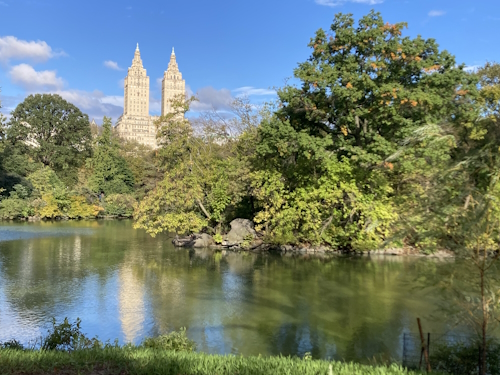
Most TWHS across countries
Thomas holds the #1 spot, having visited TWHS in 132 countries (versus WHS in 151). It shows the width of his travels and the role (T)WHS have played in it for a long time.
The names in this list are fairly similar to those in Visited WHS in Most Countries, except those who haven’t logged their TWHS visits. What does stand out is that, overall, people have visited TWHS in some 30 countries less than where they have visited WHS, although there are 181 "countries" with a Tentative List and only 168 with inscribed sites.
So the pattern seems to be:
- visited country but not a WHS (the top-ranked all have visited 160 - 193 countries)
- visited country and at least 1 WHS (-40 countries)
- visited country and at least 1 TWHS (-30 countries)
I consider myself more of a specialist (WHS focus only), and the decline is less steep (137 visited countries, 133 with a WHS, 104 with a TWHS). I expect that Atila and Zoë will have similar, gradual patterns.
Ratio
The ratio ranking shows the number of TWHS visited divided by the number of WHS visited. These members come close to having visited as many TWHS as WHS. This can be due to a strong regional focus where not many WHS are available (I am thinking of North America), so they spend their weekends visiting TWHS whereas in Europe they'd visit WHS.
Only members with over 100 WHS visited are included due to anomalies in the lower regions. It turned out for example that Schnitzel has visited 114 times more WHS than TWHS. He really can’t be bothered!
Combi
We can also add the TWHS totals to the WHS totals, though that feels weird to me as this implies that they are worth the same (which portrays them as random 'things to tick' and strays too far from what WHS are all about). So I have included a ranking where WHS visits versus TWHS visits are weighed 3:1.
Rarely visited
Roman also stands out among the obscure TWHS, another result of his methodical approach. He has been to 166 out of the 801 TWHS that have been visited by 6 members or less. Recently he was the first to have been to the Cekeen Tumulus in Senegal, for example (Photo 3).
The number 2 has ‘only’ 62. Good scorers beyond the usual names here are Afshin Iranpour (a master of Iran's extensive Tentative List) and Christravelblog (he really did his best in the UAE and Djibouti).
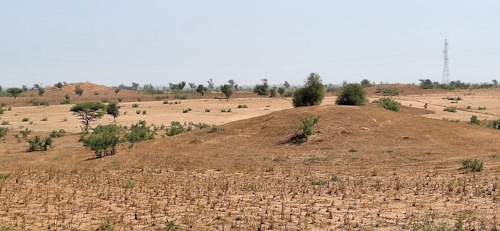
Upcoming nominations
Here I present a similar prognosis to the 'armchair ticks' that may be expected in 2025, 2026 and 2027 combined. However, it also includes TWHS that are on the radar beyond 2027.
I also checked whether a difference can be found among visits to recent TWHS (since 2010) versus older TWHS (which may have less chance of getting ever inscribed). But there is no real difference, if people visit TWHS they cover both old and new.
Are there any other data points you’d like to see about TWHS visits? Or do you have any additional observations looking at this stats page?
Els - 2 February 2025
Comments
Can SARICA 9 February 2025
Very nice stats. I guess there is a positive correlation between TWHS count and being a Nomadmania member. Many NM regions just have one or more TWHS but not any WHS. It may worth checking how many of the top TWHS visitors have NM accounts. Another positive correlation is, for sure, living in high TWHS count countries such as Turkey.
Wojciech Fedoruk 3 February 2025
Solivagant - your count improved that much because you were earlier version of Roman, visiting so many sites that are difficult even now (some actually even more difficult). Chapeau bas to your travel achievements done without Internet, GPS or credit cards .
Els - can we also see the list of essential TWHS?
Wojciech Fedoruk 2 February 2025
A bunch of new nice stats! I would love to see similar ranking of top travellers to obscure WHS. Threshold should be a bit higher, like 25 maybe.
Jay T 2 February 2025
Good topic! I take a look at TWHS whenever I'm traveling to a new region to see if there are any worth visiting, but I don't always go out of my way to visit unless they are ones that might help me better understand a region, or if they are ones that may be inscribed in upcoming years.
One of the challenges with keeping up with TWHS is that the list is constantly in flux as countries add to or retire entries. I review the list periodically throughout the year, but not regularly, to see if there are new entries for sites I've visited in the past.
Kyle Magnuson 2 February 2025
I believe about 40-50% of my visits to TWHS will be inscribed some day. I will visit the occasional TWHS only out of convenience, but others that are clearly significant with potential OUV? I will make the effort.
Additionally, I have found visits before and after inscription to be rewarding, kind of an evolution of what world heritage status can offer regarding presentation, funds, and narrative. These 2 WHS particularly come to mind as I visited multiple components before and after inscription.
- Royal Tombs of the Joseon Dynasty
- 20th Century Architecture of Frank Lloyd Wright
Els Slots 2 February 2025
In reply to Solivagant's remarks about the high quality TWHS, I have added a ranking 'Essential' which lists the members by visits to all TWHS that have a 100% recommendation score (including Masai Mara, Carnac, Svalbard etc).
Meltwaterfalls 2 February 2025
I’m very disappointed in Schnitzel far too focused on the big sites only.
Pull your paw out mate
Solivagant 2 February 2025
In my case - "thank goodness" for those early TWHS visits (or, in many cases, even before they became TWHS)! In Jan 2019 I had visited 797 WHS......Now 854.
BUT across those 6 years, I have only visited 6 new WHS - so my count has "benefited" by 47 from TWHS! Many of these have been "world class". And there are another 40 potentially coming up it seems. I might even get to 900 if I live long enough!
We each have our own objectives and priorities when travelling. It may sound "pompous" but i prefer to use "Significance" in preference to "WHS count" if and when a clash occurs as to what should be "fitted in". We know of course that, for a range of reasons, many inscribed WHS are of far less "significance" for their values than some T List (or even non T List) sites. I have recently been discussing with Els whether she intends visiting the Mara in her upcoming Kenya trip. For reasons I fully understand (not contributing an immediate tick, cost, time etc) she has decided not to fit it in. Personally, IMO, the Mara trumps every other Kenyan WHS - even if it is not inscribed!
CugelVance 2 February 2025
Very interesting article 👍
I for my part try to visit every tentative site which is within m reach while abroad.Some ate worthy of a whs title(for example "Veliky Rostov in Russia) and some are a joke (sabka near Abu Dhabi). Nevertheless,most of them are interesting.
Blog Countries
Top Tips for Senegal and The Gambia
I just returned from 2 weeks in Senegal and The Gambia. The countries are fairly similar, logistically entwined and both are friendly and safe. I didn’t have high expectations, but I found enough to enjoy and the WHS of Djoudj, the Saloum Delta and the Bassari Country will appeal to anyone. Herewith are some tips for travelling to Senegambia as a WH Traveller.
Don't be put off by the scarce resources in English
There is frustrating little info in English available for an individual traveller to get around these countries. Recommended sources like the iOverlander app or the West-Africa Facebook group will only make you sad and I have deleted them already. The people active there seem only interested in road conditions and the peculiarities of border crossings, not in the countries themselves, and often display very questionable travel ethics. At least visiting the 8 WHS will give you a good overview of Senegal and The Gambia as they are nicely spread out and touch upon different topics.
No need to prebook
There is no need to book any transport or activities in advance (except for The Difficult Two, see below) – everything can be arranged on the spot by just asking around. The only issue is that the cost level of tours/transport will be the same as your accommodation – so as I choose upper-midbudget hotels (around 70 EUR), you will pay more for tours etc than at the budget places of course.
Be satisfied with a short visit
One of the reasons that Senegambia did not appeal to me much is that there aren’t tons of things to see and do. It certainly lacks traditional sights, but it is worth it to visit a market (such as those at Farafenni or Serrekunda in The Gambia) or do a village walk with a guide or go fishing or any other activity close to the daily life of the local people. So rather make it a short visit (2 weeks max for both countries combined) than no visit at all.
Choose a strategy for The Difficult Two
Niokolo Koba and Bassari Country lie in East Senegal, far from anywhere else. Whatever approach you use, it’s a long way there, it will be hot and dusty and amenities aren’t at the same level as in the North of Senegal. Options are:
- Outsource the problem by letting a Gambian tour company organize the trip for you. This is the one I choose, see my itinerary for more info.
- Contact the luxury NiokoLodge inside the park and arrange a stay, private transfers from/to Dakar and a 1 or 2-day tour to Bassari Country from there.
- Self-drive from Dakar. The roads are good, and the traffic behaviour isn’t crazy (goats and donkeys may cross the road though), but you have to be prepared for numerous checkpoints (some will demand money if you’re a toubab) and the possibility of a breakdown of the car, so I’d advise being with 2 people at least. Also, driving inside the park is tough and needs high clearance (and a full fuel tank).
- Public transport from Dakar. Cities in the East such as Tambacounda and Kedougou are easily reached by bus, but both WHS need additional private transport to reach & explore, and especially Niokolo Koba is expensive.
You need basic French for Senegal
At my hotels, they usually spoke some English and you will get from A to B. The main issue you’ll have without basic French will be enjoying the tours (and you will have many boat tours!), as the local guides anywhere in Senegal only can speak French (which already is the second or third language for them).
Els - 26 January 2025
Comments
Clyde 31 January 2025
Thanks for the tips! Glad there are interesting sites too apart from great birdwatching.
Meltwaterfalls 29 January 2025
Jay T, The Gambia traditionally has been a UK winter sun destination.
So November - March you may be able to find some package deals with cheap flights to Banjul, they might even be cheap enough that you can foregoe some or all of the 7/14 nights in the hotel.
Jay T 27 January 2025
Thanks for the tips! Senegal and the Gambia both remain on my radar for a trip, and I appreciate the recommendations for how best to see some of the sites further afield.
Blog Index
Books
- Book: Seven Wonders (21 July 2024)
- Book: Saving Yellowstone (10 September 2023)
- Book: Natural Wonders of the World (30 July 2023)
- Book: Heaven on Earth (21 May 2023)
- Book: World Heritage Craze in China (26 March 2023)
- Possible Antarctic WHS (5 February 2023)
- Book: Cultural Heritage and Mass Atrocities (25 September 2022)
- Book: India: UNESCO World Heritage Sites (3 April 2022)
- Book: Great World Wonders (7 November 2021)
- Book: Chinese Heritage Sites and their Audiences (13 June 2021)
- Book: Coastal WHS (3 January 2021)
- Book: Atlas Obscura (10 February 2019)
- The Rebirth of Bodh Gaya (10 February 2018)
- Books: Modern African Architecture (18 February 2017)
- Books: Wonders of the World (28 November 2015)
- Book: Chasing 193 (8 July 2015)
- Book: The Heritage Universe (27 June 2015)
- Book: Japan's World Heritage Sites (26 October 2014)
Connections
- The Most Remote Cultural WHS (13 October 2024)
- The World’s Greatest Natural Areas (6 October 2024)
- Spice (Route(s)) WHS (18 August 2024)
- Connected (14 July 2024)
- Top Neolithic WHS (7 July 2024)
- Strict Nature Reserves (12 May 2024)
- Centres of Plant Diversity #2 (14 April 2024)
- Centres of Plant Diversity (17 March 2024)
- WHS in TCC Territories (25 February 2024)
- Gorilla (T)WHS (28 January 2024)
- Foreigner Pricing Analysis (14 January 2024)
- Best Visited on a Bicycle (19 November 2023)
- Minor Boundary Modifications (29 October 2023)
- Smaller than they seem (20 August 2023)
- Himalaya (4 June 2023)
- One thousand visitors or fewer (23 April 2023)
- Canopy Walkways (2 April 2023)
- Invention of sweets and pastries (22 January 2023)
- Transnational WHS in the making (16 October 2022)
- Obelisks (21 August 2022)
- Threatened by Oil and Gas Exploration (7 August 2022)
- Byzantine (24 July 2022)
- Critically endangered fauna species (12 June 2022)
- Petrosomatoglyphs (1 May 2022)
- Fossil sites (17 April 2022)
- Cable cars (27 March 2022)
- Erotic Art (19 December 2021)
- Silk Road(s) (14 November 2021)
- Diluted by an Extension (31 October 2021)
- WHS and Beer (12 September 2021)
- Buildable in Lego (22 August 2021)
- WHS Hotspots (15 August 2021)
- WHS affected by Poaching (2 May 2021)
- Epic Subtitles (7 March 2021)
- No Road Access (28 February 2021)
- Expressionist Architecture (17 January 2021)
- Cold War (20 December 2020)
- Dependent Territories (29 November 2020)
- Mammal WHS (15 November 2020)
- Bird Migration WHS (24 May 2020)
- WHS in classic documentaries (12 April 2020)
- Unusual Entry Requirements (29 March 2020)
- WH Travel & Passports (1 December 2019)
- Railway WHS (1 September 2019)
- Why people die at WHS (21 April 2019)
- The Umayyads (17 March 2019)
- Historical Graffiti (3 March 2019)
- Viewable from another WHS (9 June 2018)
- One million or more (3 March 2018)
- WHS On Banknotes (16 December 2017)
- A Silk Roads overdose? (20 November 2016)
- A History of WHS in Danger (5 September 2015)
- WHS & World War I (19 October 2014)
Countries
- Most Difficult Countries to visit a WHS in (23 February 2025)
- Top Tips for Senegal and The Gambia (26 January 2025)
- Top Tips for India (15 December 2024)
- Top Tips for the wider Veneto Hotspot (20 October 2024)
- Top Tips for Japan (29 September 2024)
- Completing Norway (30 June 2024)
- Top Tips for Travelling to Kazakhstan (16 June 2024)
- Top Tips for 15 days in China (2 June 2024)
- Top Tips for Pakistan (24 December 2023)
- Top Tips for Saudi Arabia (3 December 2023)
- Top Tips for Zimbabwe (1 October 2023)
- Top Tips for Madagascar (9 July 2023)
- Tips for Travelling to Western Turkey (14 May 2023)
- Tips for Travelling to Northern Brazil (8 January 2023)
- Tips for Travelling to Chad (20 November 2022)
- Top Tips for Eastern Canada (10 July 2022)
- Top Tips for Tunisia (29 May 2022)
- Top Tips for Northern Mexico (27 February 2022)
- Best Countries (23 January 2022)
- Tips for travelling to Kyrgyzstan (17 October 2021)
- Tips for travelling to Costa Rica (25 April 2021)
- Tips for travelling during a pandemic (14 March 2021)
- Tips for travelling to Iceland (20 September 2020)
- Tips for travelling to Colombia (16 February 2020)
- Tips for travelling to Russia (27 October 2019)
- Tips for travelling to Georgia (4 August 2018)
- Tips for travelling to the Gulf (2 May 2018)
- Value for money WH countries (24 March 2018)
- Tips for travelling to Namibia (3 February 2018)
- Tips for travelling to Ecuador (14 October 2017)
- Tips for travelling to Egypt (30 April 2017)
- Tips for Azerbaijan and Iran (3 June 2016)
- Tips for Rwanda, Congo and Uganda (30 January 2016)
- Tips for Travelling to Myanmar (31 October 2015)
- Mongolia's Tentative List (28 February 2015)
- How to visit the (T)WHS of Sudan (22 November 2014)
Exhibitions
- Unveiling the Stoclet House (7 April 2024)
- Rietveld Bike Tour (26 November 2017)
- Looking for the Golden Rhino (4 December 2016)
- Vestfold Ship Burials (18 June 2016)
- Rome. Emperor Constantine’s dream. (22 November 2015)
- Carthage (8 March 2015)
TWHS Visits
- 2025 WHC: Carnac (23 March 2025)
- Workers' Assembly Halls (Belgium) (10 November 2024)
- Sites of the Busan Wartime Capital (1 September 2024)
- San Pedro de Atacama (24 March 2024)
- Fell and Pali Aike Caves (10 March 2024)
- The Underwater City of Port Royal (18 February 2024)
- Uch Sharif (17 December 2023)
- Hejaz Railway (26 November 2023)
- WHC 2023: Kuldīga (6 August 2023)
- Gordion (7 May 2023)
- Íznik (30 April 2023)
- Niah Caves (19 March 2023)
- Banteay Chhmar (19 February 2023)
- Via Appia (30 October 2022)
- Valentia's Transatlantic Cable Ensemble (23 October 2022)
- Civita di Bagnoregio (9 October 2022)
- Zagori & Pindos (11 September 2022)
- Talayotic Minorca (21 November 2021)
- Kyrgyz Silk Roads: Uzgen (10 October 2021)
- Historic Center of Parma (29 August 2021)
- Bachkovo Monastery (18 July 2021)
- Mosaics of Philippopolis (11 July 2021)
- Prince-Bishops' Palace in Liège (20 June 2021)
- Lower German Limes: Berg en Dal Aqueduct (30 May 2021)
- Corcovado NP (11 April 2021)
- Guayabo National Monument (24 March 2021)
- San José (21 March 2021)
- Buenos Aires 1880-1920 (21 February 2021)
- The Egyptian Museum (14 February 2021)
- The Meuse Citadel of Namur (7 February 2021)
- The Neanderthal fossil sites of Wallonia (24 January 2021)
- Plantations in West Curacao (13 December 2020)
- Unreviewed TWHS: Hirkan Forests (22 November 2020)
- Sanxingdui in 2007 (8 November 2020)
- Archipelago of La Maddalena (25 October 2020)
- Bouches de Bonifacio (18 October 2020)
- Nice (4 October 2020)
- Mediterranean Alps (27 September 2020)
- Icelandic Turf House Tradition (13 September 2020)
- Mývatn and Laxá (30 August 2020)
- Fjallabak (23 August 2020)
- Old Wastewater Treatment Plant (16 August 2020)
- Mértola (5 August 2020)
- Vila Viçosa (2 August 2020)
- Works of Álvaro Siza (19 July 2020)
- Great Spas: Bad Ems (28 June 2020)
- ShUM city of Worms (21 June 2020)
- Chapultepec (7 June 2020)
- Frederiksoord-Wilhelminaoord (17 May 2020)
- Tuol Sleng Genocide Museum (3 May 2020)
- Unreviewed TWHS: Lalish Temple (26 April 2020)
- Unreviewed TWHS: Bahoutdin Complex (5 April 2020)
- New Dutch Waterline (22 March 2020)
- WHC 2021: The Slate Landscape (15 March 2020)
- Unreviewed TWHS: Tansen (8 March 2020)
- Sarlat at Night (1 March 2020)
- Salt Town of Nemocón (5 January 2020)
- Virgilio Barco Library (29 December 2019)
- Irkutsk (20 October 2019)
- Staigue Stone Fort (25 August 2019)
- The Royal Sites of Ireland: Cashel (18 August 2019)
- Hospital of Our Lady with the Rose (11 August 2019)
- WHC 2019: Krzemionki (30 June 2019)
- Chobe (2 June 2019)
- WHC 2021: Sarnath (5 May 2019)
- Olive Grove Landscape of Lucena (14 April 2019)
- Lower German Limes: Xanten (31 March 2019)
- Harran and Sanliurfa (24 March 2019)
- Padova Urbs Picta (10 March 2019)
- WHC 2019: Paraty Culture and Biodiversity (24 February 2019)
- WHC 2019: Walled City of Jaipur (17 February 2019)
- Ancient Quanzhou (26 January 2019)
- Yen Tu: Vinh Nghiem Pagoda (5 January 2019)
- Roman heritage of Nîmes (1 December 2018)
- Raoudha Nilometer (24 November 2018)
- WHC 2019: Danube Limes - Arrianis (31 October 2018)
- Uplistsikhe Cave Town (21 July 2018)
- Tbilisi Historic District (14 July 2018)
- David Gareji Monasteries (23 June 2018)
- Fortress of Ananuri (16 June 2018)
- Gdansk - Town of Memory and Freedom (2 June 2018)
- WHC 2018: Žatec, Town of Hops (12 May 2018)
- Ore Mountains (5 May 2018)
- Dubai Creek (28 April 2018)
- Sharjah: the Gate to Trucial States (18 April 2018)
- Forts of Rostaq and al-Hazm (4 April 2018)
- Kuwait Towers (31 March 2017)
- Teylers (17 March 2018)
- WHC 2019: Plečnik in Ljubljana (17 February 2018)
- Etosha Pan (10 January 2018)
- Benguela Current (5 January 2018)
- Fish River Canyon (1 January 2018)
- Lechner's pre-modern architecture (9 December 2017)
- WHC 2018: Chaîne des Puys (18 November 2017)
- Hoge Kempen Transition Landscape (21 October 2017)
- Mathildenhöhe (19 August 2017)
- Mid-Atlantic Ridge (6 July 2017)
- Ptolemaic Temples (21 April 2017)
- WHC 2017: Dilmun Burial Mounds (11 February 2017)
- Palau and the Yapese Stone Money (7 January 2017)
- Tet el Bad (Stone Coffin) (1 January 2017)
- Hanyangdoseong (29 December 2016)
- Zadar - Romans and Venetians (12 November 2016)
- Nelson Mandela Legacy Sites (19 October 2016)
- Ngwenya Mines (12 October 2016)
- 1940's - 1950's Architecture of Minsk (7 September 2016)
- 20th Century Ivrea (13 August 2016)
- Waterloo (30 July 2016)
- Agricultural Pauper Colonies (9 July 2016)
- Masouleh (25 May 2016)
- Sheki, the Khan's Palace (2 May 2016)
- Temple of Fire (24 April 2016)
- Fortress Town of Palmanova (12 March 2016)
- WHC 2016: Rediscovering Dosan Seowon (13 February 2016)
- WHC 2016 – Corbusier’s Villa Savoye (7 February 2016)
- Mgahinga – Where Gold Meets Silver (9 January 2016)
- Rwandan Genocide Memorial Sites (29 December 2015)
- WHC 2016: Cetinje (5 December 2015)
- WHC 2016: Ani Cultural Landscape (13 November 2015)
- Sonian Forest’s Beech Cathedral (7 November 2015)
- Ancient cities of Upper Myanmar (24 October 2015)
- Bagan Archaeological Zone (17 October 2015)
- Konbaung Wooden Monasteries (9 October 2015)
- WHC 2015: Christiansfeld (20 June 2015)
- The Mystery of Kokino (14 June 2015)
- Amphitheatre of Durres (3 June 2015)
- WHC 2015: Champagne (14 May 2015)
- WHC 2015: Palermo, Cefalù & Monreale (9 May 2015)
- Two TWHS in Antwerp (6 April 2015)
- Five Dzongs of Bhutan (14 March 2015)
- Granada and its natural environment (20 February 2015)
- Volcan Masaya - Exciting or not? (14 February 2015)
- WHC 2015: Singapore Botanic Gardens (20 December 2014)
- Old Dongola (1 December 2014)
- Great Spas of Europe: the original Spa (15 November 2014)
- WHC 2015: Hagi Castle Town (9 November 2014)
Travel in general
- Travel Windows of Opportunity (30 March 2025)
- Trip Budgeting (31 March 2024)
- Parallel planning of multiple trips (27 August 2023)
- My experience travelling ultra-light (20 March 2022)
WH Travellers
- Tours to WHS (9 February 2025)
- TWHS Masters (2 February 2025)
- The Quest for 1,100 visited WHS - Year 3 (5 January 2025)
- Drive-by Visits (22 December 2024)
- Maddeningly Close (3 November 2024)
- WHS-ers do Tassel (4 August 2024)
- Getting a Stoclet Pass (23 June 2024)
- Learning from the Birders (28 April 2024)
- Completing Countries (4 February 2024)
- The Quest for 1,100 visited WHS - Year 2 (7 January 2024)
- The Value of a TWHS (16 July 2023)
- The 9 WHS Commandments (5 March 2023)
- Nine things I learned in my first year of full-time travel (1 January 2023)
- Revisit needed (27 November 2022)
- Shandos ... planning a WH trip to South America (2 October 2022)
- Michael Ayers ... cycling to over 300 WHS (5 June 2022)
- WH Travel Focus (10 April 2022)
- The quest to 1100 visited WHS in 2030 (2 January 2021)
- Wojciech and Thomas ... In Iraq (28 November 2021)
- Zos M. ... Completing China (24 October 2021)
WHS Visits
- WHS #957: Djerba (16 March 2025)
- WHS #956: Cidade Velha (16 February 2025)
- WHS #951: Saloum Delta (19 January 2025)
- WHS #946: Banc d'Arguin (12 January 2025)
- WHS #941: Mahabodhi Temple (8 December 2024)
- WHS #939: Kaziranga (1 December 2024)
- WHS #936: Indian Sundarbans (24 November 2024)
- WHS #932: Champaner-Pavagadh (17 November 2024)
- WHS #926: Ogasawara Islands (22 September 2024)
- WHS #925: Sado Gold Mines (15 September 2024)
- WHS #924: Shiretoko (8 September 2024)
- WHS #909: Tanbaly (9 June 2024)
- WHS #904: China Danxia (26 May 2024)
- WHS #903: Mount Wuyi (19 May 2024)
- My #900: Roșia Montană (21 April 2024)
- WHS #894: Los Alerces National Park (3 March 2024)
- WHS #886: Sangha! (21 January 2024)
- WHS #880: Makli, Thatta (10 December 2023)
- WHS #875: Erfurt (5 November 2023)
- (T)WHS of New York City (22 October 2023)
- WHS #872: Poverty Point (15 October 2023)
- Chicago Meetup (8 October 2023)
- WHS #850: Mana Pools (17 September 2023)
- WHS #848: Great Zimbabwe (3 September 2023)
- WHS #846: Tsingy de Bemaraha (2 July 2023)
- WHS #845: Royal Hill of Ambohimanga (25 June 2023)
- WHS #844: Rainforests of the Atsinanana (18 June 2023)
- WHS #843: Pitons of Reunion (11 June 2023)
- Kraków revisited (9 April 2023)
- WHS #833: Gunung Mulu (12 March 2023)
- WHS #831: Kui Buri NP (26 February 2023)
- WHS #827: Sambor Prei Kuk (12 February 2023)
- WHS #825: Mazagan (29 January 2023)
- WHS #813: Fernando de Noronha (18 December 2022)
- WHS #812: São Luis (11 December 2022)
- WHS #811: Central Amazon (4 December 2022)
- WHS #810: Ounianga Lakes (13 November 2022)
- WHS #809: Ennedi (6 November 2022)
- WHS #807: Island of Patmos (18 September 2022)
- WHS #804: Mount Athos (4 September 2022)
- Skellig Michael 2022 (14 August 2022)
- WHS #800: Red Bay (3 July 2022)
- WHS #798: Mistaken Point (26 June 2022)
- WHS #797: Gros Morne NP (19 June 2022)
- WHS #789: Kairouan (22 May 2022)
- WHS #786: Carthage (15 May 2022)
- WHS #783: Lake District (24 April 2022)
- WHS #780: Quirigua (13 March 2022)
- WHS #778: Joya de Ceren (6 March 2022)
- WHS #774: Sierra de San Francisco (20 February 2022)
- WHS #773: El Vizcaíno (13 February 2022)
- WHS #771: EPGDABR (6 February 2022)
- WHS #766: Otumba (30 January 2022)
- WHS #765: Paquimé (16 January 2022)
- Luxembourg revisited (9 January 2022)
- WHS #764: Serra de Tramuntana (5 December 2021)
- WHS #763: Sulaiman-Too (3 October 2021)
- WHS #762: Western Tien-Shan (26 September 2021)
- Silk Roads: Zhetysu region (19 September 2021)
- WHS #761: Bologna (5 September 2021)
- WHS #760: Cordouan Lighthouse (8 August 2021)
- WHS #747: The Prosecco Hills (25 July 2021)
- WHS #746: Kazanlak (4 July 2021)
- WHS #745: Pirin National Park (27 June 2021)
- Wadden Sea: Schiermonnikoog (16 May 2021)
- WHS #744: Guanacaste (18 April 2021)
- WHS #743: Stone Spheres (4 April 2021)
- WHS #742: Talamanca Range (28 March 2021)
- Wadden Sea: Texel (10 January 2020)
- WHS #741: Willemstad (6 December 2020)
- WHS #740: Su Nuraxi di Barumini (1 November 2020)
- WHS #739: Gulf of Porto (11 October 2020)
- WHS #738: Surtsey (6 September 2020)
- WHS #737: Thingvellir (2 September 2020)
- WHS #736: Vatnajökull (26 August 2020)
- WHS #735: Kladruby nad Labem (9 August 2020)
- WHS #734: Bom Jesus do Monte (26 July 2020)
- WHS #733: Mafra (12 July 2020)
- Cologne revisited (14 June 2020)
- Aachen revisited (31 May 2020)
- WHS #732: Vézère Valley (23 February 2020)
- WHS #731: Cartagena de Indias (9 February 2020)
- WHS #730: Mompox (2 February 2020)
- WHS #729: Coffee Cultural Landscape (26 January 2020)
- WHS #728: Tierradentro (19 January 2020)
- WHS #727: San Agustín (12 January 2020)
- WHS #726: St. George, Bermuda (24 November 2019)
- WHS #725: Augsburg (17 November 2019)
- Val di Noto - Catania (10 November 2019)
- WHS #724: Mount Etna (3 November 2019)
- WHS #723: Lake Baikal (13 October 2019)
- WHS #722: Sviyazhsk (6 October 2019)
- WHS #721: Bolgar (29 September 2019)
- WHS #720: Kazan Kremlin (22 September 2019)
- WHS #719: Trinity Sergius Lavra (15 September 2019)
- WHS #718: Church of the Ascension (8 september 2019)
- WHS #706: Tokaj Wine Region (28 juli 2019)
- WHS #705: Hortobagy NP (21 July 2019)
- WHS #704: Hollókő (14 July 2019)
- WHS #703: Bialowieza Forest (23 June 2019)
- WHS #702: Zamość (16 June 2019)
- WHS #701: Victoria Falls (9 June 2019)
- WHS #700: Okavango Delta (28 May 2019)
- WHS #699: Tsodilo (19 May 2019)
- WHS #698: Naumburg Cathedral (28 April 2019)
- WHS #697: Medina Azahara (7 April 2019)
- WHS #696: Fujian Tulou (2 February 2019)
- WHS #695: Kulangsu (19 January 2019)
- WHS #694: Hani Rice Terraces (16 January 2019)
- WHS #693: Chengjiang Fossil Site (12 January 2019)
- WHS #692: Zuojiang Huashan (9 January 2019)
- WHS #691: Ho Citadel (2 January 2019)
- WHS #690: Trang An (29 December 2018)
- Hôtel Solvay (15 December 2018)
- WHS #689: Cave of Pont d'Arc (8 December 2018)
- WHS #688: Wadi al-Hitan (17 November 2018)
- WHS #687: Historic Cairo (10 November 2018)
- WHS #686: the Pyramid Fields (3 November 2018)
- WHS #685: Valtice (27 October 2018)
- WHS #684: Kromeriz (24 October 2018)
- WHS #683: Litomysl Castle (21 October 2018)
- Athens Acropolis revisited (17 October 2018)
- WHS #682: Daphni Monastery (13 October 2018)
- WHS #681: Meteora (9 October 2018)
- WHS #680: Philippi (6 October 2018)
- WHS #679: Bursa (29 September 2018)
- Istanbul revisited (26 September 2018)
- WHS #678: Nessebar (22 September 2018)
- WHS #677: Srebarna (19 September 2018)
- WHS #676: Churches of Ivanovo (15 September 2018)
- WHS #675: Tomb of Sveshtari (12 September 2018)
- WHS #674: Madara Rider (8 September 2018)
- WHS #673: Geirangerfjord (26 August 2018)
- WHS #672: Alta Rock Art (18 August 2018)
- WHS #671: Visby (28 July 2018)
- WHS #664: Gelati Monastery (7 July 2018)
- WHS #665: Qalhat (1 July 2018)
- WHS #663: Upper Svaneti (27 June 2018)
- WHS #662: Mtskheta (20 June 2018)
- WHS #661: Malbork Castle (26 May 2018)
- WHS #660: Torun (19 May 2018)
- WHS #659: Cultural Sites of Al Ain (25 April 2018)
- WHS #658: Land of Frankincense (21 April 2018)
- WHS #657: Bat and Al-Ayn (14 April 2018)
- WHS #656: Bahla Fort (11 April 2018)
- WHS #655: Aflaj of Oman (7 April 2018)
- WHS #654: Ibiza (25 February 2018)
- WHS #653: Robben Island (22 January 2018)
- WHS #652: Cape Floral Region (19 January 2018)
- WHS #651: Twyfelfontein (15 January 2018)
- WHS #650: Namib Sand Sea (12 January 2018)
- WHS #649: Pécs Necropolis (3 December 2017)
- WHS #648: Saint-Savin sur Gartempe (11 November 2017)
- WHS #647: Bourges Cathedral (4 November 2017)
- WHS #646: Galapagos Islands (7 October 2017)
- WHS #645: Quito (30 September 2017)
- WHS #644: Sangay NP (26 September 2017)
- Ingapirca (22 September 2017)
- WHS #643: Cuenca (19 September 2017)
- WHS #642: Antequera Dolmens (16 September 2017)
- WHS #641: Tetouan (13 September 2017)
- WHS #640: Gorham's Cave (10 September 2017)
- WHS #639: Neolithic Orkney (27 August 2017)
- WHS #638: Ice Age Art Caves (13 August 2017)
- WHS #637: Røros (30 July 2017)
- WHS #635: Pico Island (15 July 2017)
- WHS #634: Angra do Heroismo (1 July 2017)
- Wooden tserkva of Zhovkva (10 June 2017)
- WHS #633: L'viv (4 June 2017)
- WHS #632: Telc (20 May 2017)
- WHS #631: Cesky Krumlov (13 May 2017)
- WHS #630: Holasovice (6 May 2017)
- WHS #629: Nubian monuments (26 April 2017)
- WHS #628: Ancient Thebes (16 April 2017)
- Paris revisited (27 March 2017)
- WHS #627: Salins-les-Bains (11 March 2017)
- WHS #626: Beaune (Burgundy) (4 March 2017)
- WHS #625: Par force hunting landscape (4 February 2017)
- WHS #624: Royal Joseon Tombs (21 January 2017)
- WHS #623: Baekje sites in Gongju (14 January 2017)
- WHS #622: Namhansanseong (11 January 2017)
- WHS #621: Rock Islands (4 January 2017)
- Westminster Abbey (10 December 2016)
- WHS #620: Plitvice Lakes (5 November 2016)
- WHS #619: Vredefort Dome (29 October 2016)
- WHS #618: Drakensberg (22 October 2016)
- WHS #617: iSimangaliso Wetland (15 October 2016)
- WHS #616: Mapungubwe (8 October 2016)
- WHS #615: Makapan Fossil Hominid Site (3 October 2016)
- WHS #614: Nesvizh (17 Sept 2016)
- WHS #613: Mir Castle (10 September 2016)
- WHS #612: Kernavė (3 september 2016)
- WHS #611: Curonian Spit (26 August 2016)
- Palazzina di Stupinigi (20 August 2016)
- WHS #610: Piedmont Vineyards (6 August 2016)
- WHS #606: Reichenau (2 July 2016)
- WHS #605: Swiss Alps (25 June 2016)
- WHS #604: Rjukan / Notodden (10 June 2016)
- WHS #603: Golestan Palace (28 May 2016)
- WHS #602: Soltaniyeh (21 May 2016)
- WHS #601: Takht-e Soleyman (18 May 2016)
- WHS #600: Armenian Monastic Ensembles (14 May 2016)
- WHS #599: Tabriz Bazaar (11 May 2016)
- WHS #598: Safi al-Din Ensemble (8 May 2016)
- WHS #597: Gobustan Rock Art (5 May 2016)
- WHS #596: Walled City of Baku (29 April 2016)
- A Rainy Day in Oporto (16 April 2016)
- WHS #595: Rock Art of the Coa Valley (2 April 2016)
- WHS #594: Santiago de Compostela (26 March 2016)
- Another piece of the Longobard puzzle (5 March 2016)
- Venice in one day (27 February 2016)
- WHS #593: Aquileia (21 February 2016)
- WHS #592: Kasubi Tombs (24 January 2016)
- WHS #591: Rwenzori Mountains (20 January 2016)
- WHS #590: Bwindi (15 January 2016)
- WHS #589: Virunga! (4 January 2016)
- A second look at Edinburgh (19 December 2015)
- WHS #588: Forth Bridge (13 December 2015)
- WHS #587: Pyu City of Halin (3 October 2015)
- WHS #586: Wachau (19 September 2015)
- WHS #585: Neusiedlersee (13 September 2015)
- WHS #584: Gammelstad (19 August 2015)
- WHS #583: Laponia (15 August 2015)
- Searching for the Wadden Sea (8 August 2015)
- WHS #582: Wooden Tserkvas (1 August 2015)
- WHS #581: Malopolska Churches (25 July 2015)
- WHS #580: Auschwitz Birkenau (19 July 2015)
- WHS #570: Medieval Monuments in Kosovo (10 June 2015)
- WHS #569: Ohrid Region (6 June 2015)
- WHS #568: Berat and Gjirokaster (30 May 2015)
- WHS #567: Butrint (27 May 2015)
- WHS #566: Corfu Old Town (24 May 2015)
- WHS #565: Vézelay (20 May 2015)
- WHS #564: Cistercian Abbey of Fontenay (17 May 2015)
- Remembering the Kathmandu Valley (3 May 2015)
- Florence in-depth (27 April 2015)
- WHS #563: Medici Villas and Gardens (21 April 2015)
- WHS #562: A Mining Landscape (25 March 2015)
- WHS #561: León Cathedral (6 February 2015)
- WHS #560: Ruins of León Viejo (31 January 2015)
- WHS #559: Portobelo (24 January 2015)
- WHS #558: Panamá (18 January 2015)
- WHS #557: San Cristobal de La Laguna (10 January 2015)
- WHS #556: Teide National Park (3 January 2015)
- WHS #555: Gomera's Garajonay (29 December 2014)
- WHS #554: Magnificent Meroë (13 december 2014)
- WHS #553: Gebel Barkal (7 December 2014)
- WHS #552: The Two Faces of Corvey (2 November 2014)
WHS website
- The First List (9 March 2025)
- Plaque Project Update (2 March 2025)
- 2024 - A Year in Review(s) (29 December 2024)
- Best Recent WHS (27 October 2024)
- Country Statistics (25 August 2024)
- Long-term trends (11 August 2024)
- 10 Bits of Trivia about the WHS of 2024 (28 July 2024)
- Predicting new nominations (5 May 2024)
- More Stats! (11 February 2024)
- 2023 - A Year in Review(s) (31 December 2023)
- Things I learned from rewriting the site intros (12 November 2023)
- 10 Bits of Trivia about the WHS of 2022/2023 (24 September 2023)
- Incomplete Dossiers (13 August 2023)
- The WHS Commandments pt.2 (23 July 2023)
- The 10,000th Review (28 May 2023)
- Aspiring TWHS (16 April 2023)
- WHS In the News (15 January 2023)
- 2022 - A Year in Review(s) (25 December 2022)
- Country pages (28 August 2022)
- Perfect Inscriptions (31 July 2022)
- WHS tracking apps (17 July 2022)
- Spring Cleaning (8 May 2022)
- 2021 - A Year in Review(s) (26 December 2021)
- Resources about WHS (12 December 2021)
- 10 Bits of Trivia about the WHS of 2020/2021 (1 August 2021)
- The Global Strategy in 2021 (6 June 2021)
- TWHS project: the wrap-up (23 May 2021)
- WHS Plaques and Certificates (9 May 2021)
- Pimping the TWHS pages (31 January 2021)
- 2020 - A Year in Review(s) (27 December 2020)
- Looking ahead to 2021 (5 July 2020)
- Taking Travel Risks (10 May 2020)
- Remembering Iain Jackson (18 April 2020)
- 2019 - A Year in Review(s) (22 December 2019)
- A free course in World Heritage (8 December 2019)
- WH Travellers meeting 2019 (4 August 2019)
- 10 Bits of Trivia about the WHS of 2019 (7 July 2019)
- Debunking travel blog myths (12 May 2019)
- Leftovers (22 December 2018)
- Official websites of WHS (11 August 2018)
- An improved website (27 January 2018)
- 2017 - A Year in Review(s) (23 December 2017)
- Favourite entrance tickets to WHS (28 October 2017)
- Completing Europe (27 January 2017)
- WH Trip Planning in 5 steps (21 December 2016)
- WH Travellers meeting in Vilnius (31 August 2016)
- 10 Bits of Trivia about the WHS of 2016 (23 July 2016)
- WHS Top 200: The Results (9 April 2016)
- What counts as a visit? (19 March 2016)
- One of our Missing: Shwedagon Pagoda (27 September 2015)
- WH Travellers meeting in Rotterdam (26 August 2015)
- A 17-Year Journey (12 October 2014)
